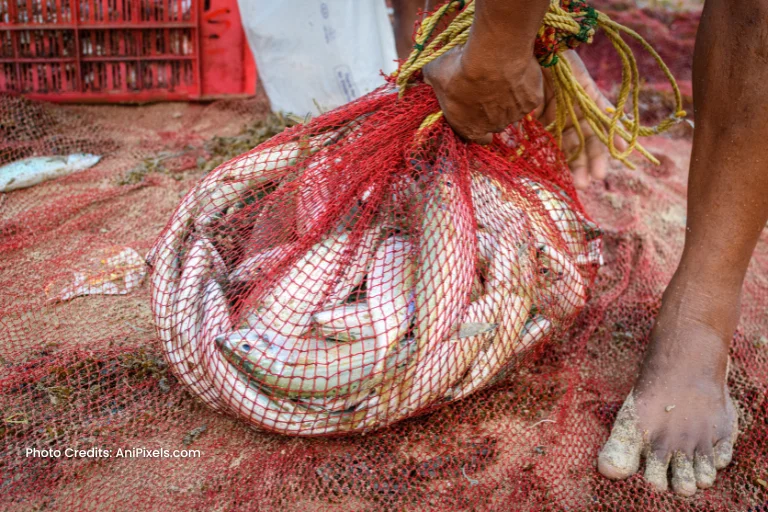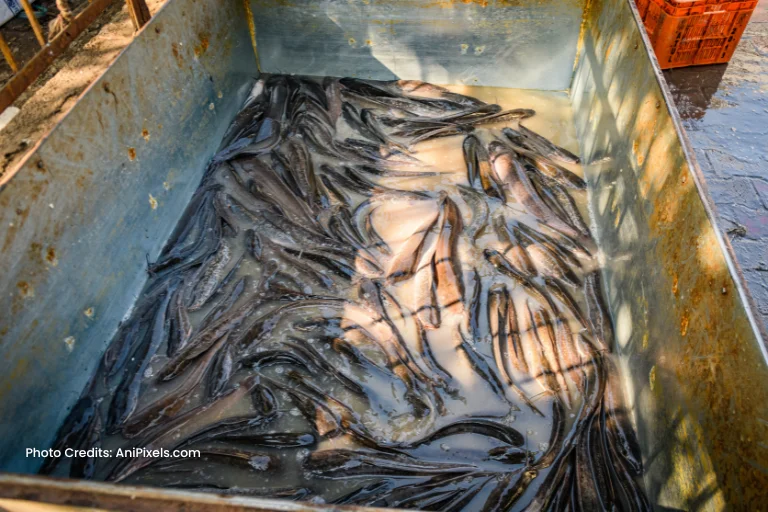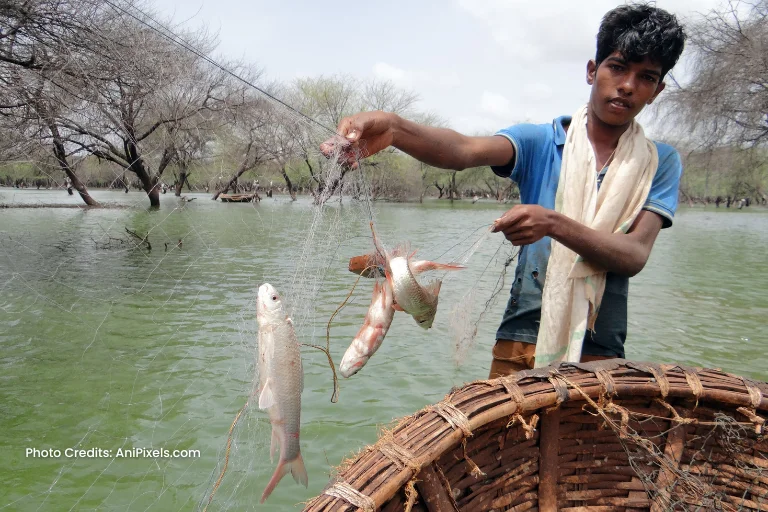
The Plight of Farmed Fish in India
By Heer Shukla
Fish, demonstrably capable of experiencing pain and suffering, often receive scant attention regarding their welfare. Aquaculture, the world’s fastest-growing food production sector, sees India as the second-largest producer of finfish. Driven by surging demand and government policies promoting industry expansion, Indian fish farming is transitioning towards intensification. This intensification raises concerns for fish welfare, further aggravated by a general lack of concern for their well-being, even in areas with robust animal welfare regulations.
A Cycle of Cruelty
India contributes roughly 6.3% to global fish production, yet the fishery and aquaculture industry is adopting increasingly cruel practices as commercialisation intensifies. The cycle of cruelty begins with a method known as “fish milking,” where eggs are manually extracted from female fish. This process subjects the fish to excruciating pain, trauma, and severe stress. The physical manipulation involved in squeezing out the eggs causes distress, disrupting their natural physiological state and inducing significant discomfort. This invasive procedure not only inflicts immediate suffering but also contributes to long-term psychological and physical repercussions for the fish, highlighting the ethical concerns and welfare implications of such practices.
Harrowing Journeys and Cramped Conditions

Fingerlings, the juvenile fish, endure a harrowing journey as they are packed into small, plastic bags for transportation, often lasting several hours or even days. This method, intended to facilitate their transfer to farms, subjects the fingerlings to extreme stress, limited oxygen supply, and cramped conditions. As a result, many of these delicate creatures succumb to the harsh conditions en route, perishing before they even reach their intended destination. This transportation ordeal not only causes unnecessary suffering and death but also underscores the logistical challenges and welfare issues prevalent in the fishery and aquaculture industry.
Overcrowding and Water Quality Issues

Fish farms house thousands of fish, often crammed into small ponds, creating overcrowded and unsuitable living conditions. This overcrowding exacerbates stress levels among fish, triggering heightened aggression and increasing the likelihood of physical injuries such as fin damage. The limited space restricts their ability to move freely, further intensifying their discomfort and compromising their overall well-being. Overcrowding significantly impacts water quality within these confined spaces. The increased density of fish results in higher levels of waste and uneaten food, leading to a rapid accumulation of pollutants in the water. This buildup of organic matter depletes oxygen levels, creating an oxygen-deficient environment detrimental to the fish’s respiratory health. Consequently, fish struggle to breathe, further exacerbating their stress and susceptibility to diseases.
Poor Water Quality and Disease
The poor water quality resulting from overcrowding poses a range of health risks for the fish, including increased vulnerability to bacterial and parasitic infections. The compromised immune systems of stressed and overcrowded fish make them more susceptible to diseases, leading to higher mortality rates and reduced overall productivity in fish farms. These interconnected problems – compromised water quality, elevated disease risks, and diminished welfare standards – plague the aquaculture industry.
Inhumane Euthanasia and Market Conditions

The conventional approach to euthanising farmed fish involves asphyxiation, achieved by either exposing them to air or placing them on ice, resulting in a prolonged and distressing demise. Additionally, during transport, numerous fish meet their end due to being crushed under the weight of other fish when entangled in nets and subsequently deposited into containers.
Fish sold in markets often endure unhygienic conditions. Their gills are cut without prior stunning, leading to bleeding and eventual death. Some fish, like catfish, are kept alive until slaughtered at the market. Here, fish are often kept in shallow water buckets, and disturbingly, children are sometimes involved in their slaughter. This not only desensitises children to cruelty but also contravenes laws prohibiting child labour.
Food Safety Concerns and Antimicrobial Resistance
With heightened concerns about health and well-being, especially due to the pandemic, ensuring food quality has become paramount. In times when food safety is a top concern amongst consumers, aquaculture struggles to provide reassurance. Parasites and disease are among the greatest issues affecting Indian aquaculture. One such parasite Argulus, a type of crustacean, is widespread and causes substantial losses. A study focused on Indian carp farming estimated that Argulosis results in losses of Rs 29,000 per hectare annually.
Unfortunately, disease is not the sole concern for aquaculture. Due to the prevalence of diseases, farmers heavily rely on antibiotics for prevention. However, this extensive use of antibiotics leads to a worrying consequence – increased antimicrobial resistance (AMR). India ranks high globally in the use of antimicrobial agents in both humans and farmed animals, with aquaculture identified as a major driver of environmental AMR in India. Recognising this issue, scientists at the Central Institute of Fisheries Technologies-Vizag are conducting a study to address aquaculture-induced AMR.
India boasts of a strong animal protection movement, with public support for humane treatment of animals used for food. Leveraging this pro-animal sentiment can bolster advocacy for fish welfare. However, advocates must navigate potential trade-offs, ensuring that improvements in one area do not inadvertently lead to negative consequences elsewhere.
Call to Action
- Policy Engagement: Advocate for stricter regulations considering fish welfare, environmental impact, and public health.
- Research and Innovation: Support research for humane farming, transportation, and euthanasia methods.
- Collaboration and Education: Encourage collaboration and educational programs to raise awareness and improve standards.
- Advocacy for Fish Welfare: Support organisations advocating for better welfare standards in fish farming.
- Consumer Awareness: Encourage informed choices prioritising products from ethical sources.

